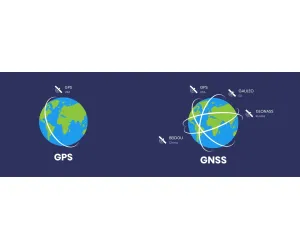Overview
GPS (Global Positioning System) is a remarkable technology that allows people to determine their position on the globe with impressive accuracy. While GPS tracking and navigation both rely on the same system, their purposes and functionalities differ.
How Does GPS Work?
GPS functions through a network of satellites that communicate with a GPS receiver. The receiver gathers positional data, which can then be used to pinpoint a location. This information can be displayed on a map, such as in a car’s navigation system.
Key Differences Between GPS Navigation and Tracking
Although both GPS navigation and tracking use the same system, they serve distinct purposes.
Navigation
- Purpose: Helps users locate a destination and provides step-by-step directions to reach it.
- Use: Commonly used in transportation (cars, ships, airplanes) for route guidance and mapping.
- Information Flow: The system identifies the user’s position and destination, displaying the route on a map. It offers real-time, turn-by-turn directions to assist in reaching the target location.
Tracking
- Purpose: Monitors the location and movement of an object, person, or asset.
- Use: Employed in various applications, including tracking vehicles, people, animals, products, or devices.
- Information Flow: The system tracks the position of the entity with the GPS receiver and sends the data to a third party (e.g., a fleet manager or owner) for monitoring purposes.
Detailed Comparison
Flow of Information
- Navigation: Provides location information to the user (e.g., a driver) by decoding GPS data and displaying it on a map. It also identifies the destination and guides the user to it.
- Tracking: Tracks the location of an object or entity and sends the data to an external party for observation or management.
Purpose
- Navigation: Focused on guiding the user to a specific destination or helping them identify their position.
- Tracking: Designed to monitor the location and movements of another object or individual.
Usage Examples
- GPS Navigation: Assists individuals in finding their way to an unfamiliar location. Whether traveling by car, ship, or plane, GPS navigation ensures users can reach their destination.
- GPS Tracking: Ideal for businesses or individuals who need to monitor the location of assets, deliveries, or individuals. For example, a business owner can track delivery vehicles’ positions and speeds.
By understanding these differences, users can better determine which GPS function—navigation or tracking—suits their specific needs.



